The Problem
Over the past 25+ years, wildfires have burned US forests at an accelerating rate. In 1995, wildfires burned 2.5 million acres. In just 26 years, that figure has more than tripled, to 8.1 million. This increase has been driven by larger, more intense and destructive fires that cost billions of dollars to manage and in many cases cannot be suppressed.
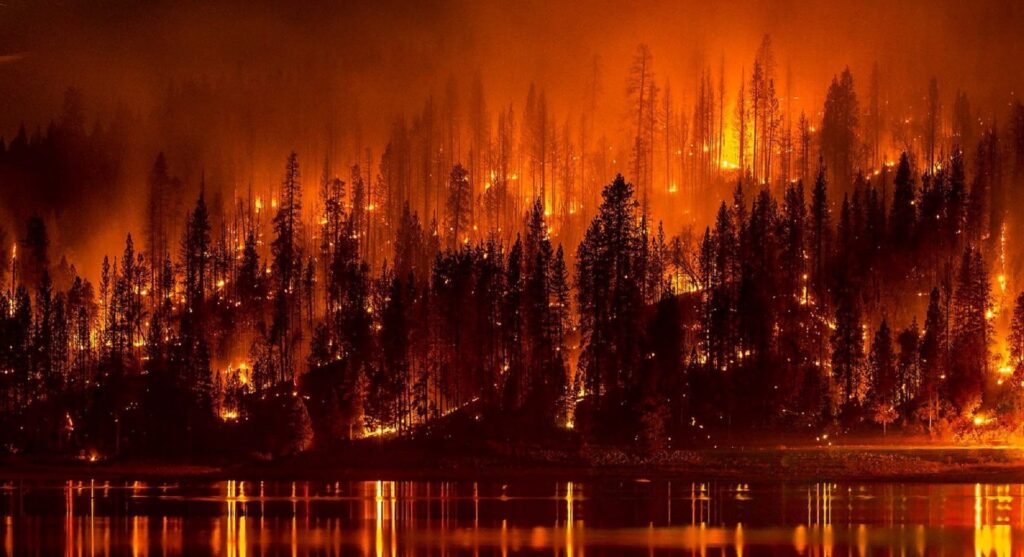
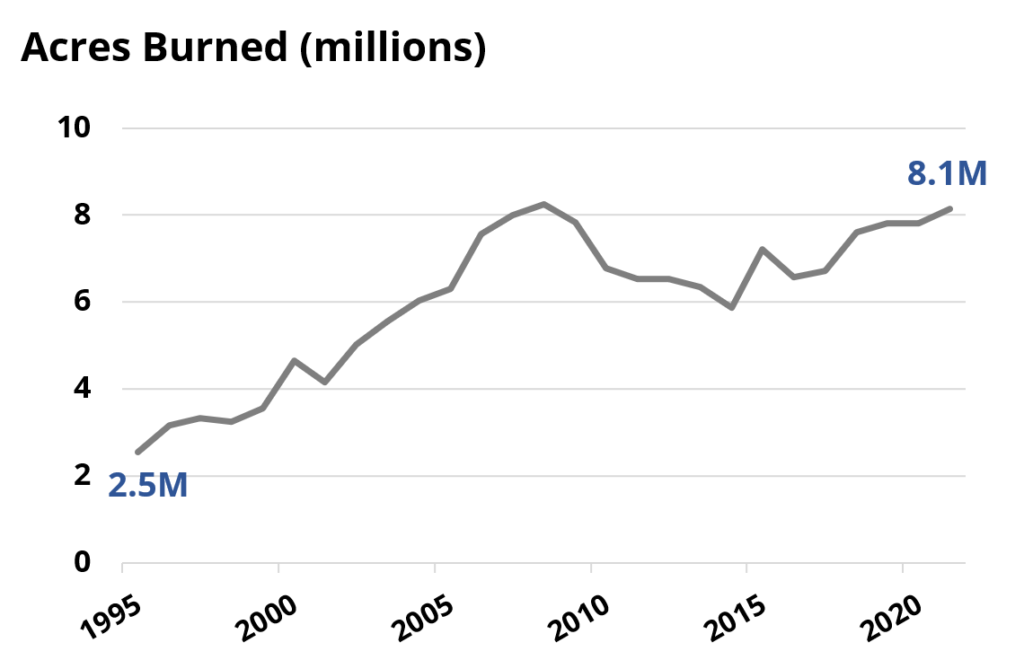
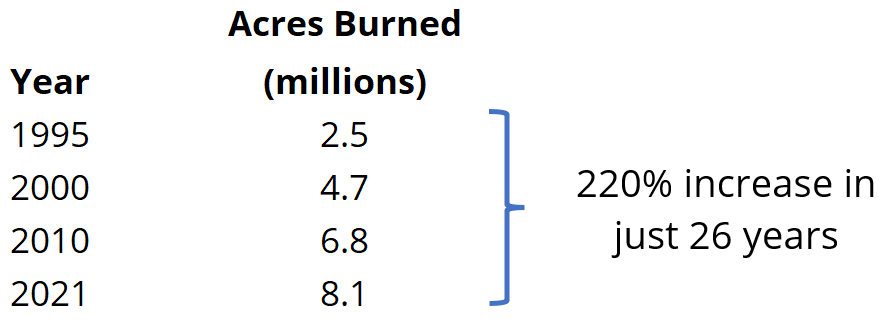
All wildfire data per National Interagency Fire Center (nifc.gov)
Acres Burned (millions) = 5 year average to remove annual volatility.
The Root Cause
In the last 100 years, widespread fire suppression has left forests unhealthy, with excess levels of biomass that are fueling the wildfire crisis. Most of the excess biomass in our overstocked forests is comprised of small diameter trees that don’t have any commercial value. The images below of Bald Mountain (east of Seattle), taken in 1934 and 2014, clearly show the increased levels of biomass, especially small diameter trees, that have accumulated in the forest.
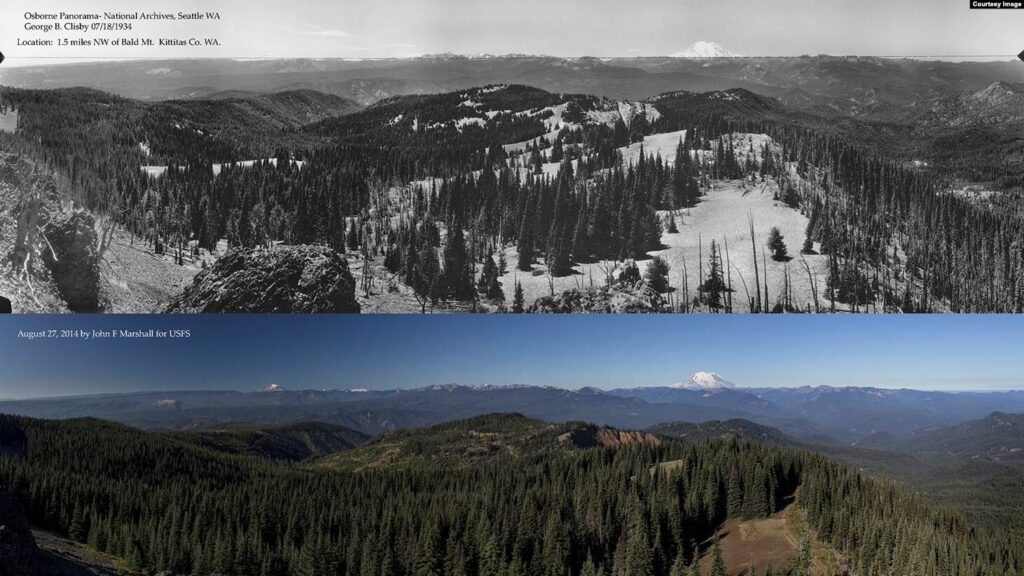
What are Ladder Fuels?
Ladder fuels as their name suggest, act as a ladder by moving less dangerous surface fires from the forest floor into the crowns of large trees. Once fire reaches the crowns, it’s intensity quickly grows, making it difficult or impossible to contain. Fire resilient forests, forests without excess ladder fuels can withstand and even benefit from smaller surface fires. C6 Forest to Farm’s business model creates a market for these ladder fuels, which should accelerate the pace and scale of thinning efforts and reduce wildfire risk.
Wildfire with Ladder Fuels...

Wildfire without Ladder Fuels...

Learn More? Paul Hessberg’s Ted Talk is a great way to learn more about the root causes of the wildfire crisis.
A Market Driven Solution
C6 Forest to Farm can change the market dynamics that have left our forests overstocked with small diameter trees that lead to extreme wildfires. Revenue from biochar allows C6 to pay for the removal of this previously valueless biomass. This new demand will resolve some of the market inefficiencies and help accelerate the thinning needed to restore fire resilience to our forests.
Learn more about our solution… (add after we create our solution page)
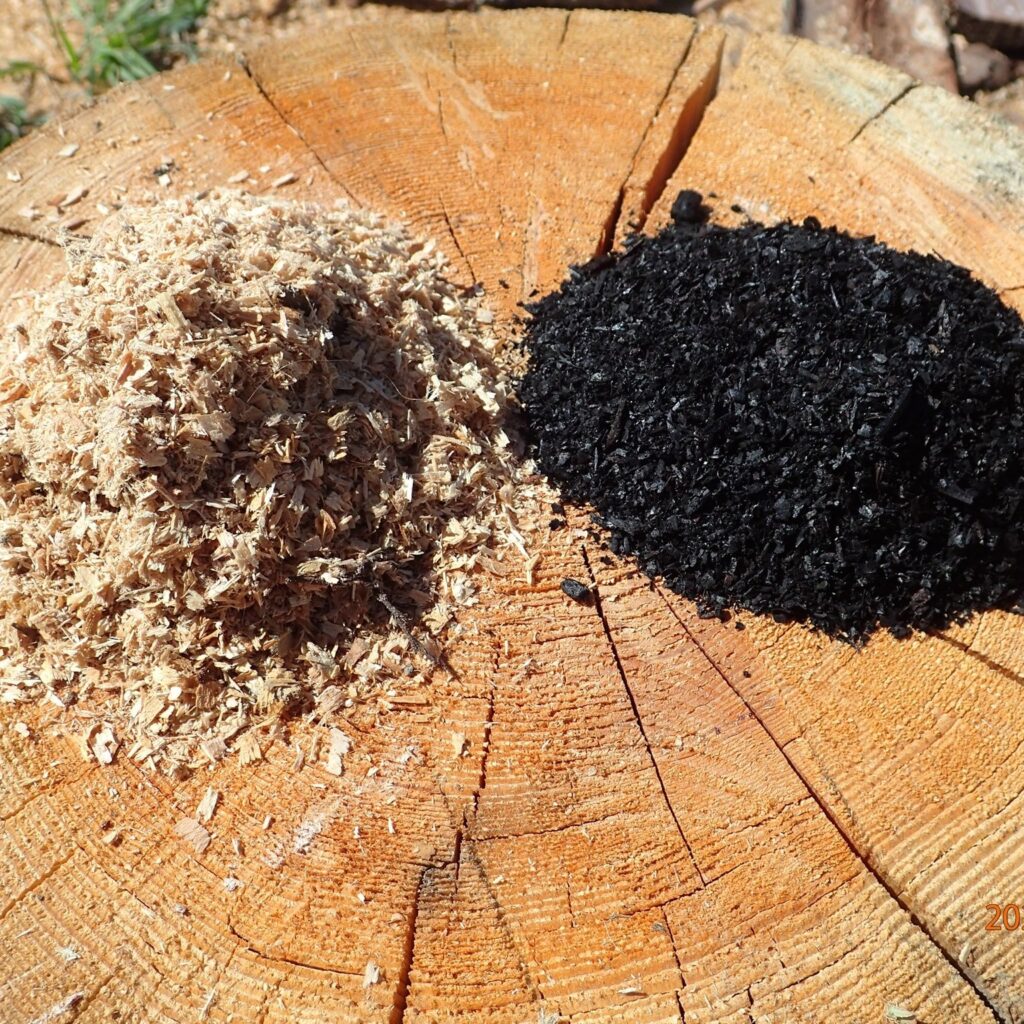
The Impacts of Wildfire
![]() In 2020, CO2 emissions from US wildfires accounted for 8% of total US CO2 emissions. Wildfire emissions are creating a dangerous climate change feedback loop: more wildfires > more CO2 > hotter temperatures > more wildfires. This positive feedback loop threatens to convert what should be a valuable carbon sink into a dangerous carbon source.
In 2020, CO2 emissions from US wildfires accounted for 8% of total US CO2 emissions. Wildfire emissions are creating a dangerous climate change feedback loop: more wildfires > more CO2 > hotter temperatures > more wildfires. This positive feedback loop threatens to convert what should be a valuable carbon sink into a dangerous carbon source.
source:
Google ClimateTrace
 All smoke-related emissions are unhealthy, but wildfire smoke is particularly dangerous due to the high temperatures associated with the fires and the fact that wildfires sometimes burn toxic materials (entire buildings, cars). Limited exposure to wildfire smoke has been linked to increased risk of stroke, heart attacks & risk of asthma especially in young children and the elderly.
All smoke-related emissions are unhealthy, but wildfire smoke is particularly dangerous due to the high temperatures associated with the fires and the fact that wildfires sometimes burn toxic materials (entire buildings, cars). Limited exposure to wildfire smoke has been linked to increased risk of stroke, heart attacks & risk of asthma especially in young children and the elderly.
source:
Stanford
![]() Wildfires can be incredibly damaging to wildlife and ecosystems. The fires in Central Washington in 2020 destroyed critical habitats for several endangered species (Seattle Times). Loss of biodiversity is a serious threat to humanity as we rely on a biodiverse world for functions like pollination, irrigation, soil reclamation, food security, disease control, predictable weather, and livelihoods such as fishing.
Wildfires can be incredibly damaging to wildlife and ecosystems. The fires in Central Washington in 2020 destroyed critical habitats for several endangered species (Seattle Times). Loss of biodiversity is a serious threat to humanity as we rely on a biodiverse world for functions like pollination, irrigation, soil reclamation, food security, disease control, predictable weather, and livelihoods such as fishing.
sources:
Nature.com
United Nations
The Royal Society
European Commission
 As of 2022, 4.5 million US homes are rated as being at either “high” or “extreme” risk from wildfires. Unfortunately each year this risk becomes a reality for some. Since 2017 US wildfires on average burn 12k structures and cause $17 billion of worth of property each year. Losing homes to wildfire is always tragic but it’s especially difficult when entire communities are lost. A tragic example is the 2018 Camp Fire which destroyed 18k structures and caused an estimated $10 billion in property damage. The problem has grown to the point where major insurance companies have withdrawn homeowners coverage from entire major markets.
As of 2022, 4.5 million US homes are rated as being at either “high” or “extreme” risk from wildfires. Unfortunately each year this risk becomes a reality for some. Since 2017 US wildfires on average burn 12k structures and cause $17 billion of worth of property each year. Losing homes to wildfire is always tragic but it’s especially difficult when entire communities are lost. A tragic example is the 2018 Camp Fire which destroyed 18k structures and caused an estimated $10 billion in property damage. The problem has grown to the point where major insurance companies have withdrawn homeowners coverage from entire major markets.
sources:
National Fire Protection Agency
National Interagency Fire Center
 In 2021, between the USFS and the Dept of Interior, the US federal government spent $4.4 billion on wildfire suppression – a 220% increase compared to 2011. The $3.7 billion spent by the USFS accounted for 51% of their annual budget – leaving insufficient funding to proactively address the crisis.
In 2021, between the USFS and the Dept of Interior, the US federal government spent $4.4 billion on wildfire suppression – a 220% increase compared to 2011. The $3.7 billion spent by the USFS accounted for 51% of their annual budget – leaving insufficient funding to proactively address the crisis.